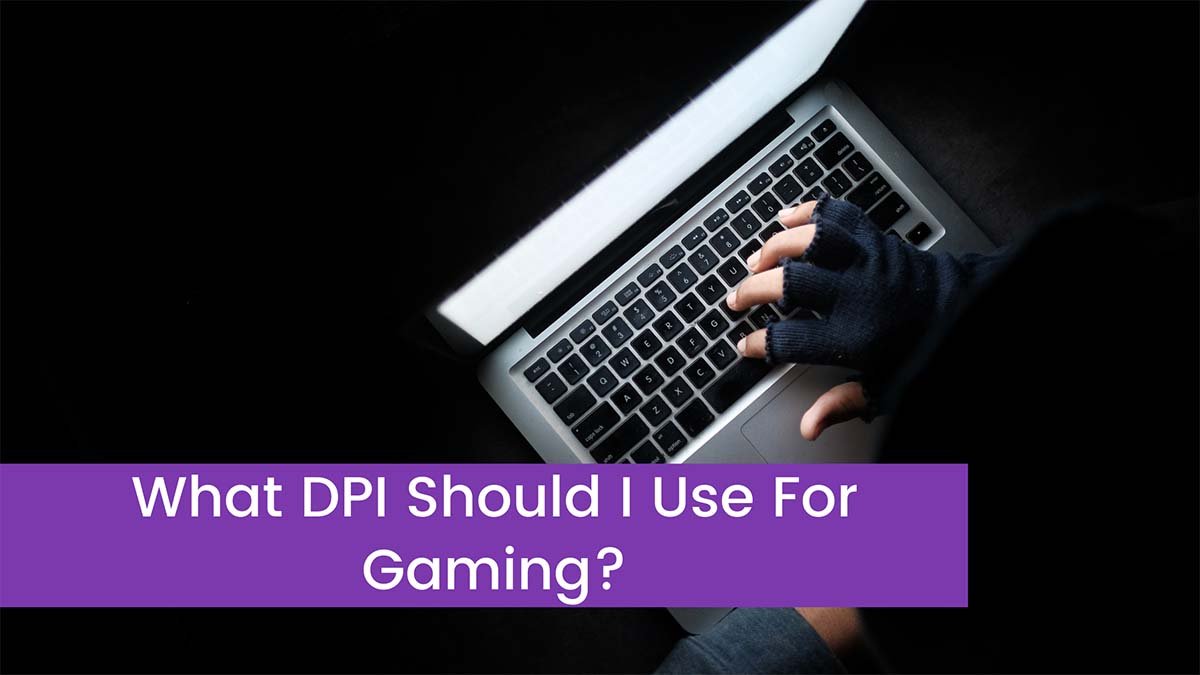The importance of choosing the correct dpi level for gaming is sometimes neglected. Games can seem pixelated or unclear when the quality settings are low, reducing your ability to make quick visual selections in the game.
What Does DPI Mean?
DPI stands for dots per inch and refers to the sensitivity of a sensor. We meant sensitive, not correct because the two are not synonymous. A sensitive sensor (one with a high DPI) does not always imply precision.
Each dot represents one pixel on the screen. If you’re playing at 1080p and your cursor advances vertically by 1000 DPI, your cursor will move by 1000 pixels. That is virtually the entire display’s height. If we used a mouse with a resolution of 2000 DPI, the cursor would move half an inch from top to bottom of the screen.
How High DPI Do You Need For Gaming?
What is the ideal DPI setting? Affordably priced mice with DPI sensitivity of 8000, 10000, or 16000 are available. The majority of gamers utilize 1080p or 1440p monitors. When paired with a 4K monitor, even a mouse with an 8000 DPI can appear overkill. Is it worthwhile to spend the extra money on such high DPI specifications?
One advantage of a mouse with a high DPI is that it can be adjusted. Almost every gaming mouse now has a button above the scroll wheel that allows users to choose between different sensitivity settings.
Depending on the situation, this helpful feature allows you to select between high and low sensitivity settings. In shooting games, it can be beneficial. For example, you could make a high-sensitivity setting your default, then switch to a lower-sensitivity option for sniping. You will be able to shoot more steadily and accurately as a result of this.
We believe that the minimum DPI you should aim for should roughly mirror the display’s horizontal resolution. That isn’t a problem because even the most expensive gaming mouse has DPIs between 2400 and 3200.
There is no such thing as a maximum DPI. While increased sensitivity is acceptable, DPI should not be used to judge a gaming mouse.
What Is DPI on a Mouse?
DPI is an abbreviation for dots per inch. It’s a misnomer, but we’ll get to that later. Even though it’s a little off-putting, the name tells it all. The DPI of your mouse is the number of pixels (“dots”) you can move the cursor on the screen per inch of hand movement.
In other words, it’s a measurement of how far your mouse moves on the surface concerning how far your pointer moves on the screen.
Here’s an illustration.
Let’s pretend your DPI is 800. That means that if you move your mouse one inch, the cursor on your screen will travel 800 pixels.
Consider higher DPI settings, such as 1600. You move your hand one inch again, but now your mouse cursor moves 1600 pixels across the screen! Your mouse went further on-screen even though your hand movement remained the same.
What is the significant idea of this DPI comparison between high and low?
It all comes down to mouse sensitivity. Regarding gaming mouse DPI, you’ve probably observed how manufacturers have been attempting to outdo each other. A large part of the marketing approach appears to be based on large numbers, possibly exceeding 20,000!
Which DPI is Best for Gaming?
That is a tricky question to answer.
That’s why we’re going to make some recommendations. They’ll guide you to your fantastic discovery of the best gaming DPI.
First and foremost:
Sensitivity is not the same as precision!
Let’s imagine you want to play a round of CS: GO with considerably higher mouse sensitivity. Like a perplexed helicopter, you’ll 360-no-scope yourself off of the screen. You’ll feel as if you’re aiming with a slick bar of soap. It’s not nice!
That’s because mouse DPI is only one element of the puzzle when it comes to gaming. Your experience is also influenced by:
- In-game sensitivity (which varies from game to game!) and a native sensitivity
- Resolution and aspect ratio of the screen
- Your style of play and muscle memory
- What kind of game do you play?
- Let’s take a closer look at each of these.
Native Sensitivity
Windows sensitivity and in-game sensitivity both play a role as multipliers. In the following part, we’ll go through them in greater detail.
Keep your pointer precision and mouse acceleration unchecked at all times because they can drastically affect your gaming DPI.
Each game’s in-game sensitivity settings are different. So, if you tried to use the same mouse settings for gaming in Overwatch in Apex, for example, the sensitivity wouldn’t be the same!
That also means that the ideal DPI for Apex Legends will differ from the best DPI for any other game.
Resolution and aspect ratio of the screen
Assume you’re upgrading from a 22-inch 1080p display to a 27-inch 1440p monitor. Your mouse sensitivity will most likely be affected, and you will need to increase it to accommodate the larger screen.
With a larger screen and the same DPI settings, it will feel like you need to move your hand a lot more to move your pointer across the screen. With ultra-wide curved monitors or twin monitors, the sensor will only get stronger.
Your style of play and muscle memory
Everyone has their unique style of play and moves. Some people choose higher DPI settings because they prefer to perform all of their tasks with a single wrist flick (beware of Carpal tunnel syndrome, though). Others prefer to play on a larger gaming mat with lower DPI settings and more arm and shoulder movement.
But wait, there’s more!
It also relies on how well you’ve acquired muscle memory for the game. Most automatic movements will stop working if you modify your long-time mouse settings for gaming. As a result, you must figure out what works best for you and stay with it.
What kind of game do you play?
Doesn’t it make sense that what counts as good DPI in an FPS would not work in an RTS? Take the advice given below with a grain of salt. What works for others may or may not work for you. Treat anyone who claims to have the best DPI for gaming with a good grain of skepticism in general.
The optimal DPI for gaming is in the lower range of 400-800 for shooting precision in FPS. Although there isn’t a universally agreed ideal range for MOBA games, this could be your sweet spot for greater control over your clicks.
For MMOs and RPGs, it’s a different situation, as you’ll rely on a broader range of movement on maps rather than precision. The ideal DPI for those games is in the higher range of 1000-1600. So, nothing out of the ordinary. The same holds for RTS games, where you’ll need to keep a strategic eye on everything that’s going on.
You may have noticed that we haven’t even covered high DPI settings. That’s because you’re not truly in need of them!
People on Reddit are frequently raving about their strange gaming settings with 10000+ DPI, which they claim is the optimal DPI for League of Legends. However, you don’t need much to get the best results.
conclusion
Finally, we may say that gaming DPI is a little overhyped as a notion. Sure, it’s vital, but it’s not a life or death situation, as some mouse manufacturers would have you believe.
In reality:
There is no one-size-fits-all DPI for gaming. Because your DPI isn’t an independent value, it’s simply a matter of experimenting with different combinations. In truth, your DPI settings only make sense in the context of a larger picture, which includes:
- the size of the screen
- Sensitivity settings in Windows and in-game
- Various game styles
- Different types of games
“Know thyself and know thy DPI measure,” says an ancient Greek saying. So grab your mouse and keyboard and get ready to play!




